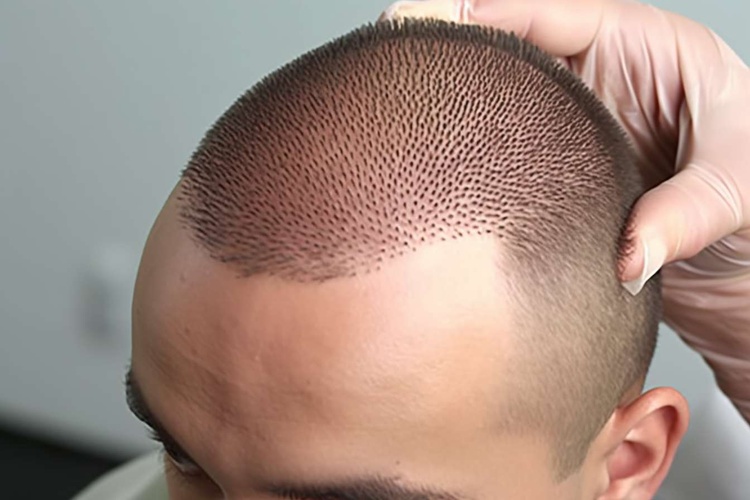Hair Transplants Explained: Techniques, Costs & Results
Struggling with hair loss? This comprehensive guide to hair transplantation explains the most common methods—FUE and FUT—plus advanced options like robotic FUE, eyebrow or beard transplants, and scalp micropigmentation. Learn who makes a good candidate, what to expect during recovery, and typical costs in Utrecht so you can make an informed decision.

Hair loss can affect confidence and self-image, but modern hair restoration techniques offer durable solutions. This guide walks through how hair transplants work, the different procedures available, who is best suited for them, potential benefits and risks, expected recovery, and typical costs in Utrecht.
How hair transplantation works
Hair transplantation moves healthy hair follicles from a donor site (usually the back or sides of the scalp) to thinning or balding areas. Two primary harvesting methods are used:
-
Follicular Unit Transplantation (FUT): A narrow strip of scalp is removed from the donor area, then dissected into individual follicular units for implantation. FUT can yield a large number of grafts in one session but leaves a linear scar at the donor site.
-
Follicular Unit Extraction (FUE): Individual follicular units are extracted directly from the donor region using a small punch tool. FUE avoids a long scar and generally has faster healing, though it can be more time-consuming.
After harvesting, tiny recipient sites are created and grafts are placed to recreate a natural hairline and appropriate density. Transplanted hair often sheds within a few weeks before entering a growth phase; new strands usually start appearing around 3–4 months, with gradual improvement and final results becoming clear between 12 and 18 months.
Variations and specialized procedures
Beyond standard FUT and FUE, several other approaches address specific needs:
-
Robotic hair transplantation: Robotic systems assist the extraction phase of FUE, improving precision and consistency while reducing human fatigue.
-
Scalp micropigmentation: A non-transplant option that tattoos tiny pigment dots into the scalp to simulate the look of a fuller head of hair or a closely-shaved style.
-
Eyebrow transplant: Fine grafts are placed in the eyebrow area to restore or reshape brows for a natural appearance.
-
Beard transplant: Small grafts implanted in facial skin can fill in patchy beards and create a more defined look.
-
Body hair transplant: When donor hair on the scalp is limited, viable follicles can be harvested from other areas such as the chest or back and transplanted to the scalp.
Who makes a suitable candidate?
Good candidates typically share these characteristics:
- Patterned hair loss or thinning predominantly from genetic causes
- Adequate donor hair supply for transplantation
- Generally good health and no medical conditions that would impair healing
- Realistic expectations about achievable density and aesthetic outcomes
- Preferably older than 25, since hair-loss patterns can still evolve in younger people
- Non-smokers, or willing to stop smoking before and after surgery to aid recovery
Transplants are not ideal for everyone. People with diffuse thinning across the scalp, certain autoimmune disorders, or those on medications that hinder hair growth may not be suitable. A detailed assessment by a hair restoration specialist is essential to determine the right approach.
Benefits and potential complications
Advantages of hair transplantation include:
- Long-lasting, natural-looking results when performed well
- Restored hair density and increased styling options
- Transplanted hair is generally resistant to the hormone-related pattern of loss that affects native follicles
- Minimal visible scarring, particularly with modern FUE techniques
Possible risks and side effects include:
- Infection at donor or recipient sites
- Scarring, especially with FUT
- Unsatisfactory aesthetic results if performed by an inexperienced surgeon
- Shock loss, where some existing hair temporarily sheds after surgery
- Temporary swelling, bleeding, or numbness in treated areas
Careful surgeon selection and adherence to pre- and post-op instructions reduce these risks significantly.
What to expect during the procedure and recovery
A typical session lasts 4–8 hours, depending on graft count and technique, and is usually done under local anesthesia. Patients remain awake but comfortable. After surgery, mild swelling and soreness are common for a few days. Surgeons provide detailed aftercare guidance, which may include:
- Sleeping with the head elevated for several nights
- Avoiding heavy exercise for 1–2 weeks
- Washing hair gently according to clinic instructions
- Taking prescribed antibiotics or pain relief as directed
- Protecting the scalp from direct sunlight for several weeks
Transplanted hair commonly falls out 2–3 weeks after the procedure; this is normal and followed by new growth that begins around 3–4 months, with continued thickening up to 12–18 months.
Typical costs in Utrecht
Prices vary with the extent of loss, chosen technique, and the clinic’s expertise. In Utrecht, you can expect a wide range depending on graft numbers and complexity. Below is a general estimate of costs and average graft counts.
| Procedure Type | Estimated Cost Range (EUR) | Average Grafts |
|---|---|---|
| FUE (Basic) | 3,000 - 7,000 | 1,000 - 2,000 |
| FUE (Advanced) | 7,000 - 12,000 | 2,000 - 3,500 |
| FUT | 4,000 - 10,000 | 1,500 - 3,000 |
| Eyebrow Transplant | 2,500 - 5,000 | 200 - 400 |
Prices, rates, or cost estimates mentioned in this article are based on the latest available information but may change over time. Independent research is advised before making financial decisions.
When comparing clinics, cost should be weighed against outcomes and surgeon experience; choosing the lowest price can increase the risk of poor results.
Making an informed decision
Research clinics, review before-and-after portfolios, read patient testimonials, and schedule consultations to discuss personalized treatment plans. A qualified specialist will evaluate scalp condition, donor supply, and realistic expectations before recommending an approach. If you have medical concerns or ongoing treatments, bring those up during the consultation.
This article is for informational purposes only and should not be considered medical advice. Please consult a qualified healthcare professional for personalized guidance and treatment.






